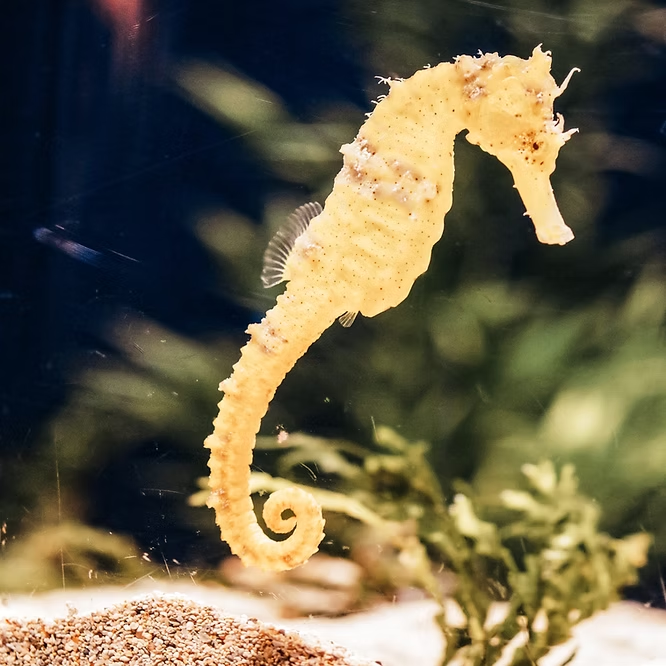Seahorses: The Curious Fish That Defy Expectations
Seahorses have long fascinated people, often appearing in public aquariums and folklore. Unlike most fish, they swim upright in a vertical position, with flexible necks and long, tubular snouts that resemble a horse’s head. Their prehensile tails, square in cross-section, allow them to grasp onto seagrass, coral, and sponges. Belonging to the genus Hippocampus—meaning “horse sea monster” in Greek—there are at least 47 recognized species worldwide.
Poor Swimmers
Unlike most fishes, seahorses lack pelvic, anal, and caudal fins, which normally provide thrust and steering. Instead, they rely on a small dorsal fin that beats about 35 times per second for propulsion, and tiny pectoral fins near their head for balance. This inefficient swimming often leaves them vulnerable to exhaustion in rough waters.
Masters of Camouflage
Seahorses inhabit shallow seagrass beds, coral reefs, and algae-rich environments in tropical and temperate waters between 45°N and 45°S. They are skilled at blending into their surroundings, capable of changing color and, in some species, growing skin filaments called cirri. This camouflage helps them avoid predators and ambush prey.
Feeding Behavior
Seahorses are ambush predators. Anchored by their tails, they remain motionless until unsuspecting prey—tiny plankton or fish fry—drift close enough to be sucked up through their long snouts. Because they lack teeth and a stomach, food passes quickly through their digestive system. To survive, a single seahorse can consume up to 3,000 brine shrimp daily.
Unique Vision and Predators
Their independently moving eyes give them nearly 360-degree vision, allowing them to scan for predators and prey simultaneously. Despite their bony bodies making them unappealing to most predators, they are at risk from crabs, which can crush them, and from humans who collect them for aquariums, souvenirs, and traditional medicine.
Monogamy and Courtship
Most seahorse species are monogamous and may mate for life. Pairs can often be seen swimming together with tails entwined. Their elaborate courtship rituals—spinning, swimming side by side, and color changes—may last for hours and are repeated daily to reinforce their bond.
Male Pregnancy
Seahorses are one of the few animals where males carry the young. During mating, females deposit eggs into the male’s brood pouch, where fertilization occurs. The pouch provides oxygen and nutrients until the eggs hatch into miniature seahorses. Depending on the species, a male may release anywhere from 5 to 1,500 babies in a single birth.
Continuous Reproduction
Once a male gives birth, the female can quickly deposit more eggs into his pouch, enabling rapid reproduction. This unique role reversal not only fascinates scientists but also highlights the remarkable evolutionary adaptations of seahorses.
From poor swimming abilities to male pregnancy, seahorses truly stand out as one of the most extraordinary creatures in the ocean.

